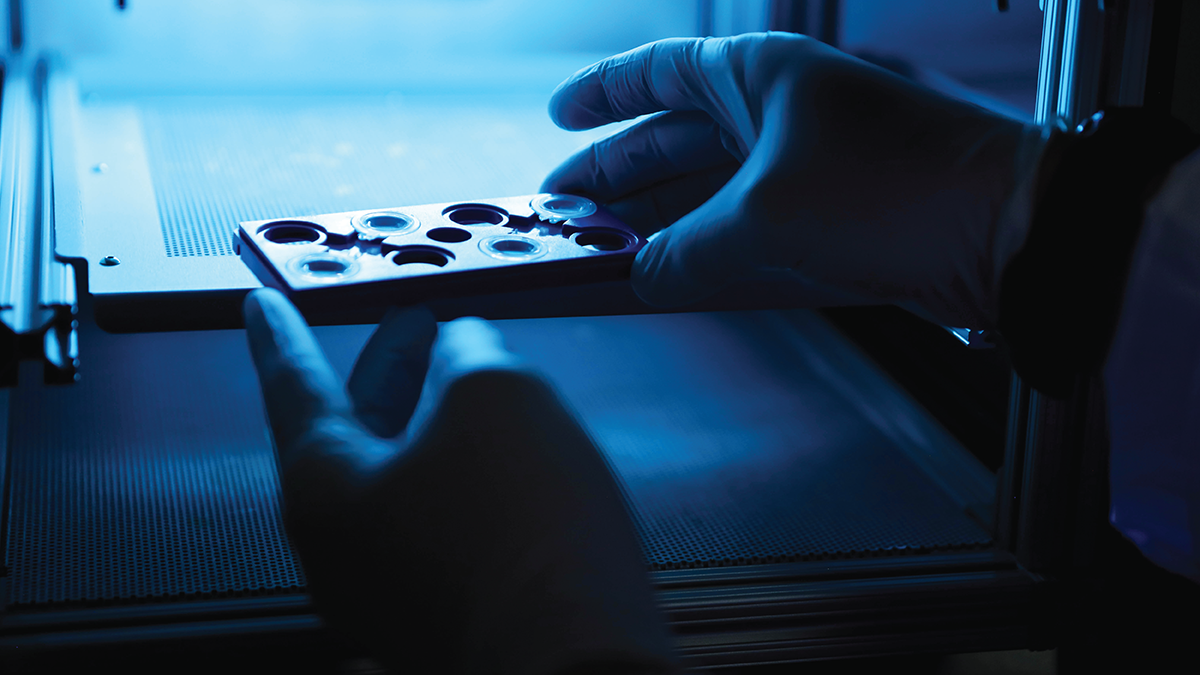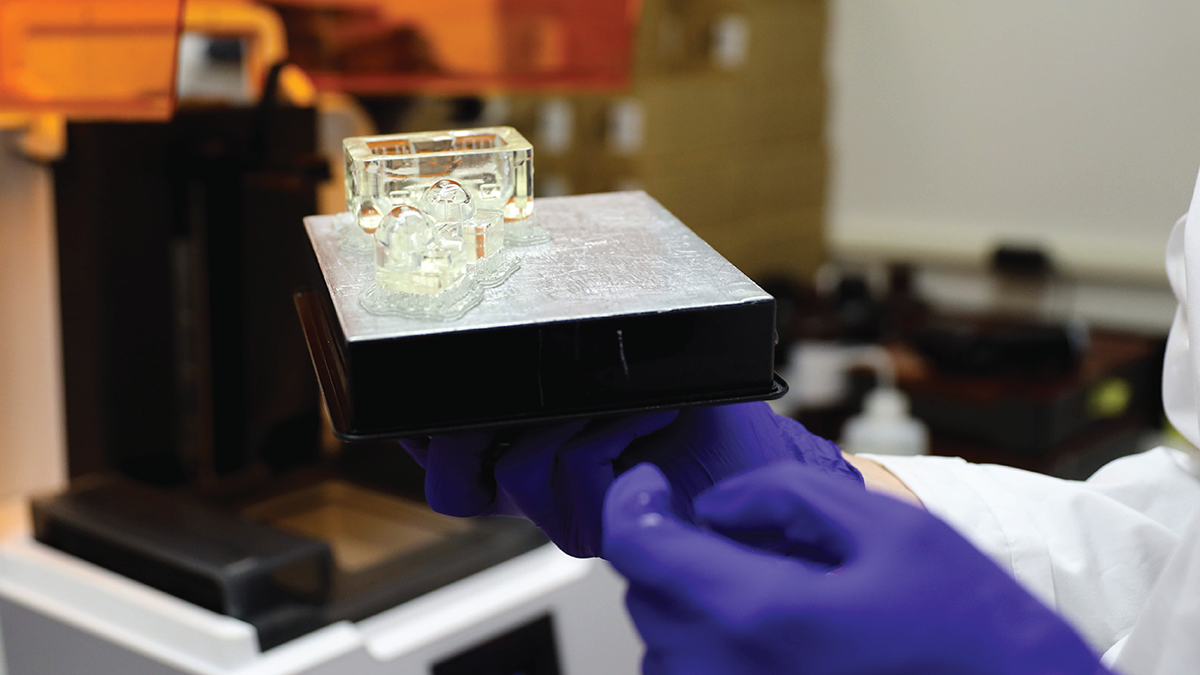You are viewing 1 of your 3 articles before login/registration is required
New Dimensions in Modeling
Advancements in 3D printing have brought us orbital implants, ocular prosthesis, and ophthalmic models – with more exciting developments to come
3D printing, also known as additive manufacturing (AM), has advanced significantly in recent years. Working by adding materials in a layer-by-layer fashion, the process has led to the realization of a wide range of technologies, materials, and applications. In the field of ophthalmology, this has culminated in the development of orbital implants, ocular prosthesis, and ophthalmic models (1).
Since 2014, the Center for Ocular Research & Education (CORE) has been at the forefront of advancements in 3D technology in ophthalmology. CORE’s development of 3D models representing the front of the eye has enabled researchers to evaluate how new products, including eye drops, contact lenses, and drug-releasing contact lenses will affect the eye, without harming human subjects. Alongside developing 3D models, CORE has also used 3D printing to create custom occluders for children and hands-on-educational products, such as OcuBall to teach clinical skills.
Building on its impressive array of products, CORE is currently developing models for the back of the eye using 3D printing and 3D bioprinting, incorporating cells into the output. Its other efforts include creating miniature models that stimulate various diseased eye states to inform better treatment options; working on ways to use 3D printing to fabricate various ophthalmic devices; and using 3D printing to develop drug-releasing contact lenses and other anterior segment devices. “The underlying concept is leveraging 3D printing to create individualized solutions, including custom-sized contact lenses with customized drug doses for individual patients,” says Chau Minh-Phan, Research Assistant Professor at CORE. “In much the same way as in other fields, the biggest impact of this technology will be in areas of ophthalmology that necessitate custom fabrication. Here, 3D printing will reduce cost and time, and provide production flexibility compared to conventional manufacturing methods.”
CORE delivered several innovations at the 2023 ARVO conference (2), but it’s clear that there is plenty of room for growth. “The potential of this technology might unfold in ways we have not yet imagined,” says Minh-Phan. “One thing is clear, though: 3D printing will undeniably play a role in our future, whether the effect is large or subtle remains to be seen.”
Taking a closer look at advancements in 3D technology, Kapil Bharti, Senior Investigator at the National Eye Institute (NEI), shared with us follow-up data on the NEI’s development of 3D outer blood-retina barrier (oBRB) tissue. Designed to provide a more in-depth understanding of AMD disease pathology, the oBRB model has now expanded to also include immune cells in the choroid. Researchers have also developed isogenic patient tissues, enabling a more detailed investigation of different genes and gene mutations in different cell types, especially pertaining to the retinal pigment epithelium (RPE).
“As the cost of 3D-bioprinters continues to drop precipitously and as labs continue to develop robust protocols to make different eye cells from patient stem cells, 3D-bioprinting of eye tissues is likely to become a standard practice in labs. This will allow us to do our discoveries on human (not animal) tissues,” says Bharti. “Not only will this reduce the usage of animals in biomedical research, it will also provide more relevant data. So, we are really excited to pursue this technology in my group.”
References
Y Fakhoury et al., “Three-dimensional printing in ophthalmology and eye care: current applications and future developments,” Ther Adv Ophthalmol, [Online ahead of print] (2022). PMID: 35782482.
CORE, “CORE Demonstrates Advanced 3D Printing for Ocular Research at ARVO 2023” (2023).
The New Optometrist Newsletter
Permission Statement
By opting-in, you agree to receive email communications from The New Optometrist. You will stay up-to-date with optometry content, news, events and sponsors information.
You can view our privacy policy here
Most Popular
Sign up to The New Optometrist Updates
Permission Statement
By opting-in, you agree to receive email communications from The New Optometrist. You will stay up-to-date with optometry content, news, events and sponsors information.
You can view our privacy policy here
Sign up to The New Optometrist Updates
Permission Statement
By opting-in, you agree to receive email communications from The New Optometrist. You will stay up-to-date with optometry content, news, events and sponsors information.
You can view our privacy policy here












